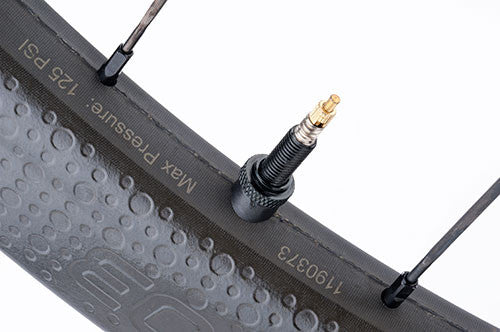
Bicycle tubes are one of those things that most people do not want to dedicate a lot of brain resources toward. And for good reason, why occupy precious brain space for something your local bike shop can so easily recommend. If you do fear that your brain real-estate is at risk of filling up please stop here! But if you are curious what all those numbers mean when describing tubes, please continue.
Looking at a tube box you could find the following sizes,
- 20-622 - 25-630
- 27 x 3/4 - 27 x 1.00
- 700 x 20c - 700 x 25c
What the heck is that?
These numbers are used to describe the rim that the tube will fit around. First thing to recognize is that there is a mix between metric and imperial. So some of these measures are in mm (622, 20, 25) and some are in inches (27, 3/4). Now what measurements do those describe.
Rim diameter
Most modern triathlon and road bikes have a wheel diameter described as 700c. This measurement used to actually mean something, as it described the actual wheel diameter. However wheels are now measured by something called the Beaded Seat Diameter (BSD), or the bottom of the rim where the inner most part of the tire sits on. For more detailed information read Sheldon Brown's page detailing everything you would ever want to know about tire sizing.
This means that most wheel sizes are 700c. Smaller bikes in the size XS or 48cm range tend to drop wheel size to 650c. Which is a bit smaller diameter wheel.
So when you look for tubes with a 700c wheel you will find a 700 or a 622 in the description. For 650c wheels you will see a 650 or possibly a 559 in the description. These two measures give you the traditional description (700 or 650) as well as the BSD of the wheel (622 or 559).
Tire Width
The next numbers to look for is tire width. These have changed over the years and range between 19mm and 40mm. Most common sizes for triathlon and road riding is 23mm or 25mm.
Testing has started to show that 25mm tires, and even 28mm tires, roll faster than their smaller width counterparts. However riders are usually restricted by their bikes. Most bikes that are 3 or 4 years old can only handle a 23mm wide tire. Newer bikes are starting to be design to accommodate wider tires up to about 28mm.
Although not as common, you will still see 28mm tires being ridden. The tire sizes above 28mm are generally for cyclocross and gravel bikes. These tires range from 32 - 40mm.
Tube Valve
 There are two major type of valves for tires. Presta valves are much more common in road and triathlon uses. Presta valves have a small screw and a nut on the top that when tightened does not allow air flow. To pump the tires you unscrew the nut to allow air to flow in and out.
There are two major type of valves for tires. Presta valves are much more common in road and triathlon uses. Presta valves have a small screw and a nut on the top that when tightened does not allow air flow. To pump the tires you unscrew the nut to allow air to flow in and out.
Presta valve tubes come in many length. This is to accommodate for deeper race wheels. For most common stock wheels you will use a shorter 42mm stem length. Once you get into deeper wheels you could use a 60mm stem or a 80mm length. To help with accommodating deep wheels there are also valve extenders where you can extend a 42mm stem to fit in a deep racing wheel.

Schrader valves are a little larger in diameter and are more common in recreational bike tires and some mountain applications. These tubes have a rubber cap that can screw over the valve to protect the opening.
Tube Material
There are two major materials use for tubes, butyl and latex. Butyl tubes are made from synthetic black rubber. They are usually cheaper and are less prone to installation errors. For the majority of triathletes and cyclists butyl tubes are most popular.
Latex tubes are made from the sap of rubber trees. They are lighter, thinner, and are more prone to installation errors (pinched tubes). They can also be as much as twice as much the price of butyl. So why use latex tubes? Speed. They are lighter and have been shown to be faster than butyl.
So what should I get?
The vast majority of tubes we sell are made of Butyl and are size 700c x 23 - 25 with a 42mm stem, like these Continental Tubes.
For those looking for a few extra seconds of speed we have some 700c x 23 - 25 latex tubes with 51mm stems, the Vittoria Latex Tubes.
For our smaller racers we have you covered with 650c x 23 with 42mm stems butyl tubes, the Continental 650 tubes.
Our hope is that kind of made sense to you now. Which will help you feel confident when purchasing tubes. And if we have failed spectacularly in that, give us a call! 770-587-9994

0 comments